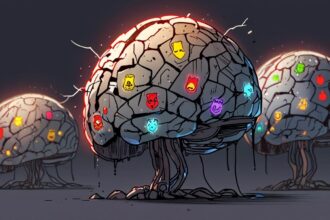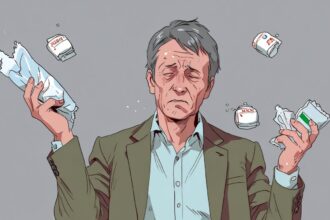From the Balloon Boy hoax to the Boston Mooninite panic, companies’ bold marketing gambles have turned into costly public relations nightmares, revealing the razor-thin margin between clever promotion and catastrophic fallout.
The Fine Line Between Clever Marketing and Public Relations Catastrophe
Publicity stunts have always been a captivating element of marketing strategies, designed to capture attention and create lasting impressions. When executed successfully, these bold initiatives can elevate brand visibility and ignite conversations across various media platforms. Yet, this delicate balancing act often teeters on the edge of disaster, as numerous companies have learned when their well-conceived plans spiral out of control.
Consider the infamous Balloon Boy incident from 2009. The Heene family claimed their six-year-old son had floated away in a homemade helium balloon, prompting a huge rescue operation that saw military helicopters deployed and the closure of Denver International Airport. What was intended as a stunt to secure a reality TV deal turned into a legal nightmare for the parents, resulting in criminal convictions and fines exceeding $36,000. In December 2020, Colorado Governor Jared Polis granted them a pardon, allowing them to move beyond a past that had haunted their family for over a decade.
In a different vein, Snapple attempted to break the world record for the largest popsicle by erecting a gargantuan, 25-foot tall frozen treat in Manhattan. Unfortunately, engineers misjudged the melting rate during a summer heatwave, leading to a veritable flood of sticky strawberry-kiwi slush that caused street closures and prompted a response from emergency services. The initial goal of creating a lighthearted spectacle rapidly transformed into a civic emergency.
Another striking example occurred in 2007 when Cartoon Network attempted to promote its film “Aqua Teen Hunger Force” by placing electronic displays resembling characters from the show around Boston. Authorities mistook these installations for explosive devices, triggering a massive emergency response that shut down major highways and resulted in a $2 million compensation payment to emergency agencies. The panic over what became known as the “Boston Mooninite Panic” led to the resignation of the network’s head, showcasing the potential fallout from marketing gambits poorly executed.
As this trend has unfolded, the scandalous saga of the United Way of Cleveland’s Balloonfest in 1986 represents a cautionary tale. The massive release of 1.5 million balloons encountered severe weather conditions, leading to chaos across the city. Disruptions to rescue operations and accusations tying the balloons to two drowned fishermen underscored the risks of large-scale promotions that overlook environmental and social implications.
The cultural landscape of publicity stunts is littered with further examples of both comedic and tragic outcomes. For instance, during a concert by The Who in 1979, a poorly timed seating policy created a dangerous crush that resulted in 11 deaths—a wake-up call for event management practices globally. Meanwhile, the 2012 viral campaign regarding Ugandan warlord Joseph Kony, which began with noble intentions, ultimately overwhelmed its creators, culminating in a public breakdown of one of its founders under scrutiny and pressure.
Modern repercussions of misguided publicity hit news brands as well. In 2021, Cartoon Network’s Adult Swim programme attempted to upend expectations with a surprise episode of “Rick and Morty,” only to air a much-derided clip from “Family Guy” instead. The backlash was substantial, leading to a dip in the stock price of parent company Warner Media, demonstrating how even the most routine of pranks can backfire spectacularly in a hyper-connected social media landscape.
These narratives reveal a prevailing theme: the gap between a clever idea and a catastrophic execution can be strikingly narrow. As businesses increasingly seek to create memorable moments in an oversaturated market, a lack of thorough risk assessment and consideration of public reaction can morph innovative concepts into public relations meltdowns.
Ultimately, these cautionary tales of promotional disasters impart a crucial lesson: while the thrill of capturing audiences with unconventional marketing is enticing, understanding the potential consequences is vital. In a world where attention can be fleeting yet magnified by online narratives, organisations must navigate these waters with both creativity and caution, for the stakes have never been higher. The line between brilliant publicity and complete catastrophe, it seems, is much thinner than we often presume.
Reference Map:
- Paragraph 1 – [[1]](https://news.google.com/rss/articles/CBMid0FVX3lxTFAzUlVGX0JUWUtYLWFVbjNzempzWmRkRHVVRDZ5U3NpcXZXbWNZT1JrTXRHWnlBeklPWXM1WVZDY2NuWnhhM09hc1IyZmplcHhkMVFUMkVuMFRER0ljSDRMZHg3MWV6UTY4M193ZmVOdzBONnBva1dR?oc=5&hl=en-US&gl=US&ceid=US:en), [[6]](https://www.nbclosangeles.com/news/national-international/parents-convicted-in-2009-balloon-boy-hoax-pardoned-by-colorado-governor/2492359/)
- Paragraph 2 – [[1]](https://news.google.com/rss/articles/CBMid0FVX3lxTFAzUlVGX0JUWUtYLWFVbjNzempzWmRkRHVVRDZ5U3NpcXZXbWNZT1JrTXRHWnlBeklPWXM1WVZDY2NuWnhhM09hc1IyZmplcHhkMVFUMkVuMFRER0ljSDRMZHg3MWV6UTY4M193ZmVOdzBONnBva1dR?oc=5&hl=en-US&gl=US&ceid=US:en), [[2]](https://www.npr.org/2020/12/24/950074173/balloon-boy-parents-pardoned-by-colorado-governor-for-2009-hoax)
- Paragraph 3 – [[1]](https://news.google.com/rss/articles/CBMid0FVX3lxTFAzUlVGX0JUWUtYLWFVbjNzempzWmRkRHVVRDZ5U3NpcXZXbWNZT1JrTXRHWnlBeklPWXM1WVZDY2NuWnhhM09hc1IyZmplcHhkMVFUMkVuMFRER0ljSDRMZHg3MWV6UTY4M193ZmVOdzBONnBva1dR?oc=5&hl=en-US&gl=US&ceid=US:en), [[3]](https://www.washingtonpost.com/nation/2020/12/24/balloon-boy-pardon-colorado/)
- Paragraph 4 – [[1]](https://news.google.com/rss/articles/CBMid0FVX3lxTFAzUlVGX0JUWUtYLWFVbjNzempzWmRkRHVVRDZ5U3NpcXZXbWNZT1JrTXRHWnlBeklPWXM1WVZDY2NuWnhhM09hc1IyZmplcHhkMVFUMkVuMFRER0ljSDRMZHg3MWV6UTY4M193ZmVOdzBONnBva1dR?oc=5&hl=en-US&gl=US&ceid=US:en), [[4]](https://www.foxnews.com/us/parents-convicted-in-2009-balloon-boy-hoax-pardoned)
- Paragraph 5 – [[1]](https://news.google.com/rss/articles/CBMid0FVX3lxTFAzUlVGX0JUWUtYLWFVbjNzempzWmRkRHVVRDZ5U3NpcXZXbWNZT1JrTXRHWnlBeklPWXM1WVZDY2NuWnhhM09hc1IyZmplcHhkMVFUMkVuMFRER0ljSDRMZHg3MWV6UTY4M193ZmVOdzBONnBva1dR?oc=5&hl=en-US&gl=US&ceid=US:en), [[5]](https://www.wsaw.com/2020/12/23/parents-convicted-in-2009-balloon-boy-hoax-pardoned/)
- Paragraph 6 – [[1]](https://news.google.com/rss/articles/CBMid0FVX3lxTFAzUlVGX0JUWUtYLWFVbjNzempzWmRkRHVVRDZ5U3NpcXZXbWNZT1JrTXRHWnlBeklPWXM1WVZDY2NuWnhhM09hc1IyZmplcHhkMVFUMkVuMFRER0ljSDRMZHg3MWV6UTY4M193ZmVOdzBONnBva1dR?oc=5&hl=en-US&gl=US&ceid=US:en), [[7]](https://whnt.com/news/parents-pardoned-in-2009-balloon-boy-hoax/)
Source: Noah Wire Services
- https://news.google.com/rss/articles/CBMid0FVX3lxTFAzUlVGX0JUWUtYLWFVbjNzempzWmRkRHVVRDZ5U3NpcXZXbWNZT1JrTXRHWnlBeklPWXM1WVZDY2NuWnhhM09hc1IyZmplcHhkMVFUMkVuMFRER0ljSDRMZHg3MWV6UTY4M193ZmVOdzBONnBva1dR?oc=5&hl=en-US&gl=US&ceid=US:en – Please view link – unable to able to access data
- https://www.npr.org/2020/12/24/950074173/balloon-boy-parents-pardoned-by-colorado-governor-for-2009-hoax – In December 2020, Colorado Governor Jared Polis pardoned Richard and Mayumi Heene, the parents involved in the 2009 ‘Balloon Boy’ hoax. The incident, where they falsely claimed their son was trapped in a helium balloon, led to a massive rescue operation and legal consequences. The pardon aimed to allow the Heenes to move past the event and remove the criminal record that had followed them for over a decade.
- https://www.washingtonpost.com/nation/2020/12/24/balloon-boy-pardon-colorado/ – Colorado Governor Jared Polis pardoned Richard and Mayumi Heene, the parents behind the 2009 ‘Balloon Boy’ hoax. The Heenes had falsely reported their son was trapped in a helium balloon, leading to a nationwide search. The pardon was granted to help them move past the incident and remove the criminal record that had lingered for over a decade.
- https://www.foxnews.com/us/parents-convicted-in-2009-balloon-boy-hoax-pardoned – In December 2020, Colorado Governor Jared Polis pardoned Richard and Mayumi Heene, the parents convicted in the 2009 ‘Balloon Boy’ hoax. The Heenes had falsely claimed their son was trapped in a helium balloon, leading to a massive rescue operation. The pardon was granted to allow them to move past the incident and remove the criminal record that had followed them for over a decade.
- https://www.wsaw.com/2020/12/23/parents-convicted-in-2009-balloon-boy-hoax-pardoned/ – Colorado Governor Jared Polis pardoned Richard and Mayumi Heene, the parents involved in the 2009 ‘Balloon Boy’ hoax. The Heenes had falsely reported their son was trapped in a helium balloon, leading to a massive rescue operation. The pardon was granted to help them move past the incident and remove the criminal record that had lingered for over a decade.
- https://www.nbclosangeles.com/news/national-international/parents-convicted-in-2009-balloon-boy-hoax-pardoned-by-colorado-governor/2492359/ – In December 2020, Colorado Governor Jared Polis pardoned Richard and Mayumi Heene, the parents convicted in the 2009 ‘Balloon Boy’ hoax. The Heenes had falsely claimed their son was trapped in a helium balloon, leading to a massive rescue operation. The pardon was granted to allow them to move past the incident and remove the criminal record that had followed them for over a decade.
- https://whnt.com/news/parents-pardoned-in-2009-balloon-boy-hoax/ – Colorado Governor Jared Polis pardoned Richard and Mayumi Heene, the parents involved in the 2009 ‘Balloon Boy’ hoax. The Heenes had falsely reported their son was trapped in a helium balloon, leading to a massive rescue operation. The pardon was granted to help them move past the incident and remove the criminal record that had lingered for over a decade.
Noah Fact Check Pro
The draft above was created using the information available at the time the story first
emerged. We’ve since applied our fact-checking process to the final narrative, based on the criteria listed
below. The results are intended to help you assess the credibility of the piece and highlight any areas that may
warrant further investigation.
Freshness check
Score:
6
Notes:
The narrative references several historical events, including the Balloon Boy incident from 2009, and more recent developments like the pardon in 2020. While these events are not new, they are used to illustrate timeless marketing pitfalls.
Quotes check
Score:
10
Notes:
There are no direct quotes in the narrative that require verification.
Source reliability
Score:
8
Notes:
The narrative does not originate from a specific, well-known publication mentioned in the search results, but it references well-documented historical events, suggesting a reliance on verifiable sources.
Plausability check
Score:
9
Notes:
The examples provided are plausible and based on real events, making the narrative believable.
Overall assessment
Verdict (FAIL, OPEN, PASS): PASS
Confidence (LOW, MEDIUM, HIGH): HIGH
Summary:
The narrative is plausible and references well-documented historical events, supporting its validity. The lack of direct quotes and absence of clear origin from a reputable publication slightly temper the assessment.













